-
2022.10.19 -
Featured Artists 참여작가: Anrio (안리오), Marie Birkedal, Joomi Chung (정주미), Björn Drenkwitz, Chad Eby, Abbigail Hong, Chae Jeongeun (채정은), Katarina Kaplarski Vukovic, Taewan Kim (김태완), Kwon-Haeil (권해일), Dae Song Lee (이대송), Lee Dongyeon (이동연), Lee Eun Joo (이은주), Yuni Lee, Allan Linder, Carmela Lorusso, Anna Mutschlechner-Dean, Leslie Nolan, Masafumi Oda, Chris Ohlson, p:d, Evan Pavka, Astrid Randrup, Beatrix Reinhardt, Elena Rondini, Marius Seidlitz, shin yeun jin (신연진), Kel Smith, Tåhume, Zhiqian Wang
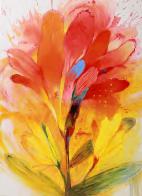
Anrio 안리오
(2021),
(2021)
Blossoming 1

Blossoming 3
대의 모습과 색을 표현해
컬러풀한 페인팅으로 '배대면 시대 힐링'을 주제로 삼아 사람들의
오르는
“Fire and Ice” (2022), “Cool, Bethlehem, Windowpane” (2022), “Love Mineral” (2022)
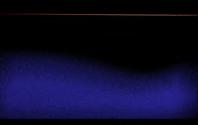
In Love Mineral, Cool, Bethlehem, Windowpane and Fire and Ice, the paint's pigment settles as dust-like traces on top of the paper and retains them in the present. Suspended in time the materials retain their life, the works appear breathing. The fragility of the paper gives a bodily response, by looking one can almost physically feel how fragile they are. The paper-works are created with very little traces of the artist's gestures, the works appear to be evoked rather than made.
To Marie Birkedal the tactile experience is an equally valid way of understanding and being in the world, as to words and language, she believes that there is a code that is visual and outside language and that some things are best understood and communicated outside language.
Marie Birkedal (1976) is a Danish artist based in Berlin since 2012. She studied English literature at Roskilde University (BA), art history at University of Copenhagen, painting at The Royal Danish Academy and graduated from Funen Art Academy in 2010. Marie Birkedal works with materiality, entropic processes, and the imperfect sublime. She makes visceral haptic works exploring the materiality of paint in a praxis she defines as “empathy and alchemy”

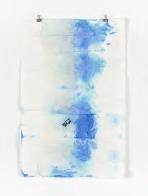

Before working Marie Birkedal clears her mind from words and ideas. In order to do that the colors are decided in advance and the materials organized and ready, thereby many decisions are taken before the process of making the work begins. In that way words and ideas will not interfere with inspiration. This preparation leads to a simplicity in the work-process that allows for a quiet spontaneity in a state of wordless focus.
Joomi Chung 정주미Chung’s Soundscape series explore sound ecology through field recordings, repeated deep listening, and visualization of sounds into animated abstract forms. Approaching each recording as a petri dish of sounds, noises are transformed into soundscapes through amplification, speed and pitch shift, reverb, repetition, and other distortions.The work presented in this exhibition, “Soundscape III: Durations” is an experimental remix of “Soundscape II: A Response to Morton Feldman’s Durations 3”. While Soundscape II visualized sound in this case, a musical composition, Soundscape III creates a sonic space through a reinterpretation of visual material. Through interpretation from sound to image and reinterpretation of image into sound, these two works explored the idea of subjective experience of time and invention of visual and aural forms.
Joomi Chung is a Korean-American artist based in Ohio, US. Her work has been exhibited at national and international venues including Urban Institute of Contemporary Art, Grand Rapids, MI; Alice F and Harris K. Weston Art Gallery in the Aronoff Center for the Arts, Cincinnati, OH; Urban Arts Space, Ohio State University, Columbus, OH; Colorado State University, Fort Collins, CO; Cloyde Snook & Hatfield Gallery, Adams State University, Alamosa, CO; The Carnegie Gallery, Covington, KY; Seoul Art Center Hangaram Museum, Seoul, South Korea; SOMA Drawing Center, Seoul, South Korea; University of West Bohemia, Pilsen, Czech Republic; and SÍM Gallery, Reykjavik, Iceland. Currently she is an Associate Professor of Art at Miami University in Oxford, Ohio.
Björn DrenkwitzThe piece Haircut consists of three videos of flower bouquets. Each bouquet is arranged on a table in such a way as to remind of a 17th century still-life. The tranquility of the image is disturbed by the entrance of a hairdresser who begins to cut the bouquets a new „haircut".
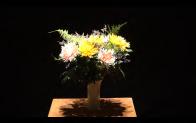
Björn Drenkwitz studied media arts, photography and theater studies in Frankfurt, Mainz and Cologne (Germany). He works as a conceptual and media artist and has been exhibited in numerous national and international exhibitions and festivals.
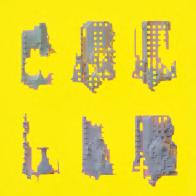 Chad Eby
Chad Eby
“Statement of EvidenceA” (2022), “Statement of Evidence B” (2022)
These digital prints feature eroded architectonic forms derived from applying small variations in the parameters of a decimation and re-meshing algorithm. Like siblings, each form exhibits something of a family resemblance—but each also has individual characteristics that set it apart. The forms lean toward the organic, but the grid everywhere struggles to reassert itself in both positive and negative space. These forms tell a story of the residues of quantization: the loss and surplus that results from moving information back and forth across the analog/digital frontier.
Chad Eby creates work, by turns stark and whimsical, that explores humanity's fraught relationship with made objects and technological processes. Eby is a Lexington Kentucky-based multidisciplinary artist, designer and educator working with light, sound and code to engage with the grain of digital technologies. Part of the faculty of University of Kentucky's School of Art and Visual Studies (SA/VS) since 2019, Eby previously served at the Herron School of Art and Design at IUPUI in Indianapolis, Kungliga Tekniska högskolan (the Royal Institute of Technology) in Stockholm, and Florida State University in Tallahassee. His work has been shown at the Tekniska Museet (the Swedish National Museum of Science and Technology) in Stockholm, Sweden, Generative Art XXII in Rome, Italy, New Media Fest in Valencia, Spain, the Indianapolis Museum of Art, TAG at the University of Western Florida, the Columbia College Center for Book and Paper, the Studio 300 Biennale at Transylvania University, and various local venues across the United States. He has attended competitive residencies at the Atlantic Center for the Arts, Elsewhere, and was selected for the inaugural Space Art Summer School hosted by the Russian Museum of Cosmonautics.
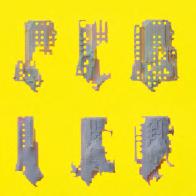
“Haircut” (2016)
Pastor’s kids have become an example of the church, a representative of being a ‘Good Christian’. These pressures from the church have either negatively or positively impacted these individuals’ relationships with culture, identity, religion, community, and more. These experiences have shaped and formed these individuals’ morals, ideals, and opinions on the world and its society All of God’s Children is a photo series that documents the Korean American Christian community, concentrating on how the community has impacted the lives of pastors’ children. The project explores the themes of identity, culture, religion, and other intimate topics through the depiction and the relationships between the portraits and their environment. This series is a reflection on the intimacy of religion and how communities form through these ties. Subjects of this project answer questions regarding experiences with the church, their current relationship with Christ, expectations from the community, and etc.
Abbigail Hong is from Ellicott City, Maryland, and graduated from NYU Tisch studying photography. Her practice specializes in documentary and photojournalism, emphasizing themes surrounding identity, culture, femininity, and religion. She mainly works with digital and occasionally analog as her main medium. Some of her series have included exploring the Asian American identity, documenting familial ties through womanhood, and photographing children in a special needs program. Her series, “One Way Ticket to the American Dream,” is a part of the “Migration and Meaning(s) in Art” exhibition at the MICA. And her piece, “All of God’s Children,” was displayed at the Microscope Gallery and the Senior Show Two at NYU Tisch School of the Arts, in part of the “New York University Photography & Imaging Senior Show 2022”. The series will also be exhibited at the CICA Museum in Gyeonggi-do, South Korea, during the “FORM 22” exhibition. She is currently a teacher’s assistant for the Digital Photography for Preteens at ICP at THE POINT at the International Center of Photography (ICP). She is a recipient of the Thomas Drysdale Grant and is now based in Brooklyn.
Chae Jeongeun is a digital artist specialized in photo collage and I compose different time and space with my photos. I'm having international exhibitions touring Asian cities as a member of ANBD(Asia Network Beyond Design). Images of people and architecture are major material for the works and they move between the past and the present in my works. Actually they indicate the relationship of human body and space, human emotions or human image in the society through my works.
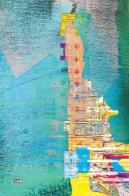
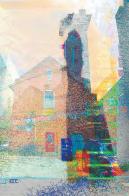
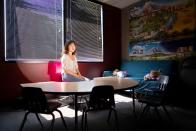 Abbigail Hong
Abbigail Hong
“Carolyn Kim” (2021)
Chae Jeongeun 채정은
“Forms | Body and Fabrics” (2022)
"Forms | Body and Fabrics "
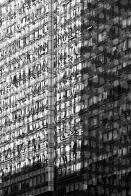
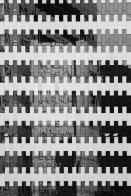

Our bodies and appearance are shaped by the clothes and fabrics that we wear In this video we can see distorted, almost abstract moving images that are actually made of piles of clothes and male body that is lying underneath. Accompanied by the musical improvisation on the flute, in this video we glance through shapes and colors, and possibly recognize some textures and forms in this abstract landscape.

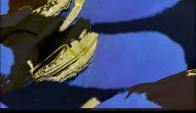
Katarina Kaplarski Vukovic | Contraart is an artist from Belgrade, Serbia with professional experience in creative industry and with Doctoral degree in Polymedia Art. Her research objectives and practice are focused on digital art and interaction design, and although she often uses digital tools as means for creation she also works in non-digital environments and combines digital and non-digital images and narratives. Katarina studied sculpture and painting before she started to digitally manipulate images and videos and to make web sites. Contraart is her Art brand. Sounds and images are equally important in her work and she often experiments with media forms, social & personal identity subjects, body politics, interaction within artworks.
(2022), “doggy7” (2022), “doggy11” (2022), “doggy12” (2022), “doggy15” (2022)
is a homage to the precious and iconic doggy characters shared with all dog lovers. The DodgeDoggy collection is an interface where you can intuitively feel the homage's empirical reality and is the embryo of the unique pet dog that exists between unconsciousness and consciousness.
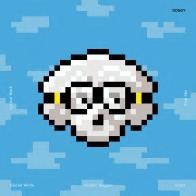



is a homage to the iconic doggy characters shared with all dog lovers, which is the value that DodgeDoggy dreams
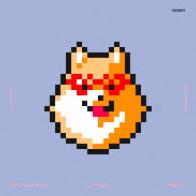 Katarina Kaplarski Vukovic
Katarina Kaplarski Vukovic
Taewan Kim
시킨다. 평형을 이루는 이중 접합 면재들은 모두 다른
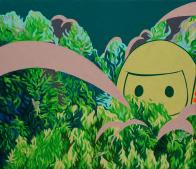


Floral Whitewater
The static and dynamic image of water metonymizes a double-curved surface structure by creating a film of a minimal surface with structural stability that does not collapse like a soap bubble on a continuous Mobius line that is dynamically meandering like a torrent. The balanced double laminated face materials all have different sizes, but they have the beauty of elegant curves that achieve dynamic equilibrium through the organization of the sides and front and rear plates.
Organic Sound#1(Blue) is richly imbued with my feelings of nature invoking emotions of peace, harmony, balance while also relaying the rational, logic, and discipline of science. Using a variety of materials, I strive to make my two-dimensional painting come to life--adding volumes, dimensions, and collage. My recitation has always been of the thought of life as harmonic and balanced. The technique presented is a juxtaposition of the natural and technological world in which different materials, overlapping in a rendition of works, are also of Korean and American cultural influences.
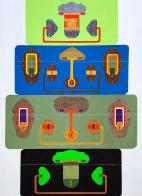
I choose to exhibit my expression of thought by making a collage using traditional Korean fabrics and combining vivid and unique patterns. This technique, also my expression of works, epitomizes the style of YangDan (unique
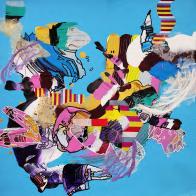
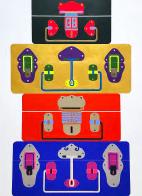
Korean fabric).
My goal is to create those discrete moments that can relay the strange and beautiful circumstance that is our humanity and place in the natural world. In understanding that the human influence on the environment is as much a part of nature as is what is also born from the earth, we can strive to find balance in our habits, our perception, and beauty in what is both taken from and given back to us, our home, our community and our World.
Yuni Lee is a mixed media artist, born in South Korea. She came to America with high passion and an eagerness to further her artistic expression. She has a diverse Art-making practice using mix-media, vibrant colors and collective patterns to demonstrate dimensional harmony of both Earth form and Technology and she is committed to making Art about expression, power and community She graduated from the University of Texas at Dallas where she obtained her Bachelor’s Degree of Arts and Performance. She is also a graduate of a Masters of Fine Arts in Painting and Drawing at the University of North Texas. She has participated in numerous group and collaborative exhibitions in the United States including Dallas Art fair, Aspen Art Fair, Fort Worth Community Art Center, and Greater Denton Art Council. She is currently an Adjunct Professor teaching at the University of North Texas. Her work is also represented by Ro2Art Gallery in Dallas. She currently resides in Dallas, Texas.
Allan Linder“MAGNIFICENCE” (2022), “ABSOLUTE TRUTH” (2022)
Allan Linder’s ETERNAL ENERGY Collection
Energy cannot be created or destroyed, it always was, always has been, everything that ever existed always exists, it's moving into form, through form, and out of form.
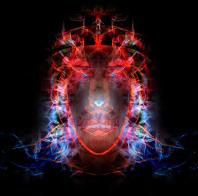
This digital painting started as a real-world pencil illustration, scanned at 4k resolution, and then carefully painted, with layers of digital fractal art until the final result.
These are fractal portraits created through infinitely complex patterns driven by recursion through applied digital paint layers.

Magnificence
Strength, beauty, power, and energy are just a few things the human condition yearns for If all of those things could be wrapped in energy and presented to the world as an inner aura, each of us would be unique in the way we look.
Absolute Truth
In a world where lying about anything is normal, the absolute truth looks very strange. In the future truth becomes normal and the true essence of each of us is on display.
My work is an exposition of a shared culture that explores a path through real and digital by creating a language between texture and color By contesting the division between the realm of digital and the realm of experience, I try to approach a wide scale of subjects in a multi-layered way to involve the viewer
My work doesn’t always reference recognizable forms, and the results are deconstructed to the extent that meaning is shifted and possible interpretation becomes multifaceted.
Allan Linder is an award-winning New York artist known for his dynamic range and style across multiple mediums throughout the art world, including comic books, animation, television, and character design.
Allan Linder (1966, California, United States) makes paintings, drawings, digital work, mixed media artworks, sculptures, and much more. Linder absorbs the tradition of making art into daily practice with a conceptual approach.This personal follow-up and revival of a tradition are important as an act of meditation.
His collected, altered, and own paintings are being confronted as aesthetically resilient, thematically interrelated material for memory and projection. The possibility seems true and the truth exists, but it has many faces, as Hanna Arendt cites Franz Kafka. By contesting the division between the realm of memory and the realm of experience, he tries to approach a wide scale of subjects in a multi-layered way, likes to involve the viewer in a sometimes physical way, and believes in the idea of function following form in a work.
His works directly respond to the surrounding environment and the artist uses everyday experiences as a starting point. Often these are framed instances that would go unnoticed in their original context. By applying abstraction, he creates intense personal moments masterfully created using rules and omissions, acceptance and refusal, luring the viewer round and round in circles.
His works don't always reference recognizable forms. The results are deconstructed to the extent that meaning is shifted and possible interpretation becomes multifaceted.
“NEMESIS” (2022)
Born and raised in Rozzano in the province of Milan, Lorusso studied sculpture at the Academy of Fine Arts of Brera in the late '90s. After dedicating herself to sculpture for about thirty years, moving from figurative art to Neorealism, she returned to figurative art. Her aesthetic and conceptual bases include ancient art to which she draws inspiration for her works, attracted by archaeology from which she finds inspirational sources. For this reason she participates in an internship at the Archaeological Site of Madinat Al-Zahra in Spain working in the area of support to the restoration during the months ofApril and May 2001. Lorusso at the beginning of 2020 after having been interested and experimented with the technique of encaustic from the little knowledge left to create a sense of movement in her works with the use of transparent superimpositions of wax and natural fibers.
After admiring the works of artists of Russian Constructivism in St. Petersburg during an artistic residency, he began to be interested in the infinite expressive values of materials. He experiments with unusual materials such as plastic, rubber, scotch paper, natural fibers, etc.. to compose works always related to the theme of the old but with a new expressive value related to the possibilities of materials. In his artistic work Lorusso wonders about a possible meeting and conjunction between past and present through the reinterpretation of ancient Greek Roman works and visual culture of ancient Italian art.
Carmela Lorusso participates in various exhibitions among the most important the Biennial in Portugal in 2018 XX Bienal Internacional de Arte de Cerveira "Artes Plásticas Tradicionais e Artes Digitais. O discurso da (des)ordem"- Bienal de Arte de Cerveira Foundation, Av Das Comunidades Portuguesas S/N 4920-275 Vila Nova de Cerveira Portugal; the biennial in Valencia 2019 "IV Biennal de València Ciutat Vella oberta" from 12 to 28 November CCCC Centre del Carme Cultura Contemporània Calle Museu n° 2, 46003 Valencia in Spain ; the XXII Triennial of Engraving in Greenchen 22. Grenchen Triennale Marktpl.5, 2540 Grenchen, Switzerland in 2021.
He exhibits in the gallery Espai B Torrent de l'Olla, 158, 08012 Barcelona, Spain and participates in a solo exhibition in the same year at Gallery 2,04 Pushkinskaya ul., 10 St.. Peterburg Russia. He also exhibits one of his works in the section "A4 ART" at Dama Daphne Museum Art in Campania since 2015. Museum 2015 Work in permanent exhibition -A4ART- Dama Daphne MuseumArt – Campania. Lorusso also in the same year won the competition "ArTcontest_2015 " in Tuscany in Rocca Tederighi province of Grosseto withThe installation work "Rinascita". He currently teaches in anArt School in Milan.
Anna Mutschlechner-Dean“What lies in the imperishable” (2021)
What are the consequences of humankind’s desire for eternal life?
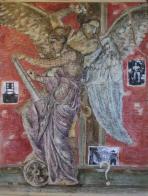
Mankind continually tries to leave behind something significant, something that will be remembered. Perhaps by staying in memory man could come closer to immortality However, as humankind moves more and more into the digital realm, technological advances may soon provide it with other possibilities.
Could the digital already be a man-made attempt at immortality?
In the video, the organic and the virtual are merged. The striving for immortality is to be thematised and questioned at the same time. Abstracted forms of a potentially immortal organism are brought together with the human body until ultimately a hybrid is created. With the ability to rejuvenate itself and so generate a new life cycle, the jellyfish symbolizes imperishability Research on this potentially immortal jellyfish species and the possible transfer of its properties to humans raises questions. Deciphering this process could extend the human lifespan. But what would this mean for humanity?
Anna Mutschlechner-Dean was born in 1999 in Upper Austria. Since 2017 she lives in Vienna, where she
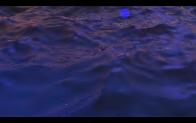 Carmela Lorusso
Carmela Lorusso
studies Transmedia Art at the University of Applied Arts. In her practice she focuses on the constant alteration of human consciousness by external factors. She works interdisciplinarily mainly through performative and digital methods. Mutschlechner-Dean has participated in several group exhibitions in Vienna. As a performer she has participated in projects such as Reaktor Potenziale 2021. Her works were shown at the annual exhibition Parallel Vienna 2021 and as part of the Blue Danube Festival 2022 in Vienna and Budapest. In 2022 her most recent work was shown at MoCDA-Museum of Contemporary DigitalArt.
Leslie Nolan“Disfigure 1” (2015)
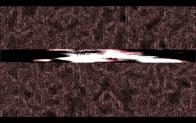
Disfigure 1 is a portrait of a man in bold orange, yellow and black. Stark and direct, at the same time it exudes a tender emotion which could be contemplative or calm. He appears at peace and thoughtful. This 10 inch by 10 inch acrylic painting on canvas commands attention while open to many interpretations.

Leslie Nolan lives in the Washington, DC area, actively exhibiting strong, bold artwork in the USA and internationally for 20 years. Raised in Oregon, USA, she served in the United States foreign service, living and working around the world, absorbing the cultures of many places, all of which have influenced her artwork. She studied at the University of Madrid, Spain and holds degrees from George Washington University, National Defense University, and Portland State University Her artwork concentrates on the human figure, injecting ambiguity into abstracted paintings. She is known for gestural, lively brushwork and vivid color Calloway Fine Art & Consulting represents her in the Washington, DC area, and she exhibits with many other galleries and art fairs.
Masafumi Oda“Monster in Monster itself”
Is the difference between objects and spaces where objects are clear and distinct? I do not think so. The first figure is a monster which is imaginary creature. He or she is leaving from some imaginary deformations of real animals, then becomes unclear whether or not it is organic. It then finally provokes the problem of indistinction between object and space (this is ontologizing the famous argument of inscrutability of reference by W. V. O. Quine.)
Based on this speculative discourse, I created 3D animations which deform a monster and its space. Music sounds more and more shrilly. Finally everything melts together “Timeless City sounds Rhythmic Ⅷ”

Now, the “Digital” has appeared since late 20th century, and has been considered as a new material consisting of 0 and 1, namely of discrete quantity But, the whole process of digital contents is under the flow of this real-time- structure. So the structure of digital can and must contain some gap or lag generated by real-time-structure itself. This is the “Rhythm”, made not only by the difference of 0 and 1, but also by the real dynamic folds of time. This means that discrete quantity of digital must be always influenced by continuous quantity, so that it may have rhythm, even if the digital itself consists of 0 and 1.
Masafumi Oda: Born in Saitama, Japan, in 1986. Enrolled in Department of Philosophy, Sophia University Having got master's degree by writing a master's thesis about Deleuze’s philosophy After graduated, crossing between academic philological studies and investigation of philosophically unique position of myself, and trying to output these results as performance, electronic music, digital video work, and recently, "Application Art". My definitive theme is "a multiplicity (multimedia) of radical duality". Treating software, hardware, digital, analog, abstract concept, concrete proper noun and so on completely equally, then trying to reveal completely new “figure” of them via works and performances under the relationship between “continuity” and “discreteness”. Participated in many international music and art festivals with music, audio-visual pieces, performances, and paper presentations in US, Italy, German, Belgium, England, Korea,
“Monster in Monster itself” (2021), “Timeless City Sounds Rhythmic Ⅷ” (2021)
China, Thailand, Argentina, Chile, NY, and Japan. My audio-visual piece “Radical Duality Ⅱ”was awarded at International Electronic Music Competition 2021 (China). My audio-visual work "Radical Duality Ⅳ" became the winner of Penn State Living Music 2022, hosted by The Pennsylvania State University
Chris Ohlson“She’s Never Coming Back” (2021), “Depressions of the Mind” (2021)
She's Never Coming Back
I remember a girl named Josie, I don't know where she is. Depressions of the Mind


They said he was suffering from occasional depressions of the mind.
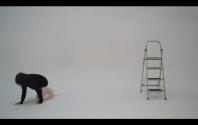
Chris Ohlson is a video artist whose work spans multiple dimensions of film, documentary, video art installation and oblique visual meditations. His thoughtfully provocative work often explores and dissects our memory of time—how we perceive, formulate, edit and curate our own reality His films and videos make use of auditory, visual, and experiential collage—from snippets of conversations with intimates and strangers, to voiceover, archival imagery, found footage and orchestral sound design.
p:d
“edge” (2020)
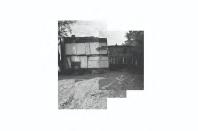
In the context of the Chinese internet, when a private account does not violate the openly prohibited redlines, it may still be "deleted" from "above." Interestingly because of the political reason everyone knows, every user can only roughly have a sense of the ambiguous limit of freedom, without knowing the exact word banned or reason for account cancellation. Therefore, trying out the boundary becomes a gambling game with the "life" of your cyber identity as the gambling chip. For the regulators, they know the "unspeakable" boundaries so well, like directors know their scene inside the viewfinders. However, the people under supervision can only participate in the game through tentative guessing.
Evan Pavka“House Taken Over (5937-5947 Beaubien Boulevard, Detroit, MI)” (2021), “House Taken Over (453 E Edsel Ford Service Drive, Detroit, MI)” (2021)
In 1946, Argentinian writer Julio Cortázar published the short ghost story Casa Tomada, translated as House Taken Over The tale follows the plight of two siblings as an unnamed entity slowly possesse their familial home, in turn dispossessing the pair from the palatial, ancestral residence. This series borrows its premise and title from Cortázar’s work, examining the notion of possession and dispossession in relation to the domestic architecture of Detroit, Michigan. A single block in the process of demolition in the city’s New Center neighbourhood is recorded in a series of individual images that are compiled to create a panorama of decay. The documentation captures the edifice in the midst of its slow erasure, revealing fragments of walls, surfaces and other elements that once defined their interiors. In this way, a parallel is drawn between the spectre in the story and the long history of immaterial social, political and economic forces that continue to disenfranchise Detroit’s residents.
Evan Pavka received his Master of Architecture from McGill University and currently teaches at Wayne State University

“Between” (2019), “When I evaporate beautifully, I die” (2021), “Nature witnes nature” (2022), “witness of white” (2022), “nature witnes nature” (2022)

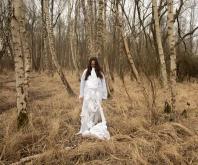
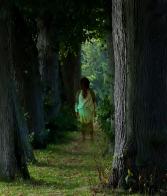
Astrid Randrup: My artworks are the field between Photograph, Sound art, performance, object and participant based art. In the processes of art, my reflections and investigations are concentrated on symbolic meanings, social interaction and the situated bodily material in time and space. At the moment, my interest is in how humans interact socially in relation to the survival of nature, how we humanly try to understand nature but continue to see ourselves as a superior force. I often work with situations, meetings and the influences of materials in the in between situations. I see my studies as sensory openings into our perception of social spaces. Where emotions and cognitive choices clash with our choices in shared views. In the last years my artwork has been shown at CopenhagenTheatre Metropolis; when I evaporate beautifully, I die, SOCLE DU MONDE “knaphul og Knap”, Den fri udstillingsbygning “påklædning”, Astrid NOACKs Atelier, Momentum husets teater, Warehouse 9 and Museet for samtidskunst.

Especially the relation between humans, their culture understanding and their relation to express feelings and opinions thru things and bodily
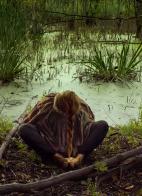
I often work with situations, meetings and the influences of materials in the meeting. I see my studies as sensory openings into our perception of social spaces. Where emotions and cognitive choices clash with our choices in shared views. I often involve the audience or the space and atmosphere in artistic processes. The symbolic meanings of space and actions are close reflections between inner and outer general feelings. I am interested in how materials and people are shaped in mutual processes and inscribe themselves both in a broad understanding of culture and formation and in a more intimate and personal one. In my history as a visual artist, I work across disciplines in theater, exhibitions, learning spaces and street art. In my artwork, I work alone and together, to see how ideas arise and disappear, as cultural norms arise and disappear
Since January 2022 I am working on a project called Geography of Belonging. The starting point for this project was my decision to wear only red boots summer or winter, hiking or opera visit during the duration of Trump's presidency By the end I accumulated 4 pairs of the same model. My impetus was not rooted in showing support of the Republican party in any form, which might come to mind because of the color*. Quite the opposite, my motivation was rooted in the deep urge to improve my mood at times of despair, frustration and helplessness. I looked down and it created a smile. Some of the pairs have carried me to many parts of the word, including Iran, Israel, Lebanon, Palestine etc. Each pair has a mapped geographical travel journal. *the color red is often associated with the Republicans

Beatrix Reinhardt grew up in Jena, Germany After the completion of her undergraduate studies in New German Literature at the Freie Universität Berlin she planned to study at the New School for Social Research in New York for one year The one year became two and Reinhardt graduated with M.A. in Media Studies. During her studies at the New School she started her studies of photography, which she continued at Illinois State University Since the completion of a Master of Fine Arts degree, Reinhardt has been living, working, curating and teaching in different parts of the world. She has been invited as artist-in-residence to universities and galleries in Finland, India, South Africa, Australia, China, Turkey, Vietnam and the US, amongst others. In 2005 she was appointed at
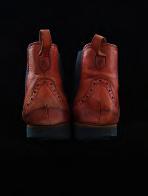 Astrid Randrup
Beatrix Reinhardt
Astrid Randrup
Beatrix Reinhardt
“untitled from Geography of Belonging” (2022), “untitled from Geography of Belonging” (2022)
City University of New York/CUNY and lives and works the majority of the year in Queens, N.Y Currently she is a visiting artist at Nelson Mandela University in Port Elizabeth, SouthAfrica.
Elena Rondini“Scherzo da prete (“Priest’s joke” or “Cruel Joke”)” (2009)
A baby's hand picks a small white alabaster breast with fingertips. The offer comes from a big black hand of a man: it seems a gift but it's probably hiding a deception.
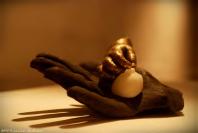
The title "Priest's prank" (in Italian a common saying translatable as "Cruel prank") evokes a joke that it's just apparently witty, but results fierce and stupid.
In this sculpture the welcoming, playful and positive shapes of the infant era are in contrast with colours and materials that refer to a religious funereal seriousness: white stone, bronze, black stucco.
The ironic aspect of the artwork is relevant: The wide open black hand of a man offering maternal nourishment, is probably playing a bad shot...contrasts come together in an image that at first glance appears serene, but which then results grotesque, on purpose opening the door to inquietude.
Elena Rondini is an Italian artist, specialized at the Academy of Fine Arts of Carrara, working with different artistic techniques and languages, ranging from sculpture to relational art. In her artworks often appears the theme of memory: from the children's tales to ancient art recovery, themes from the collective memory are investigated; surging images are used as raw material to create new expressive elements, often through small shifts of meaning, passing from the icon to the language and vice versa. The grotesque and ironic contents, the free associations, the use of the narrative thinking applied to art, the materials exploited in an unexpected form, are all means to get to the emotional involvement, stimulating and attracting to practice art as a total experience: aesthetically, conceptually and physically
Marius Seidlitz“rise against” (2022)
In his colourful works, Seidlitz addresses the complexity of the claims to the self, made on himself. The pictures are often inspired by the female body bodies that are deliberately depicted imperfectly The viewer sees colourful curves, multi-layered nudity in all its stark contradictions between attraction and repulsion. But always multidimensional, always dynamic and never too precise beauty is in the eye of the beholder Intertwined bodies, implied limbs sink into colour-intensive surfaces and dynamic lines.
Marius Seidlitz was born in Erfurt in 1985. Seidlitz began his artistic activity from 1992 to 1994 within some drawing circles. At the same time, he attended the IMAGO youth art school in Erfurt in 1992 and won his first regional art competition. From 2004 he studied fine arts at the Bauhaus University in Weimar and did an internship as an engraver at the National Engraving School Suhl from 2005-2008, where he graduated as a journeyman in 2008.Afterwards he was awarded the title of national winner in the engraving trade in 2008. 2010, Seidlitz was included in the support programme of the Federal Ministry of Research and Education. In 2012, further training as a craftsman industrial designer followed in Weimar Since 2002, the artist has exhibited at national and international shows, including Galerie Rothamel in Erfurt, Galerie Kunststück in Berlin, and international art fairs in the Netherlands and Italy In 2022, his works are exhibited in museums in China and Korea. His art is represented in numerous private collections nationally and internationally
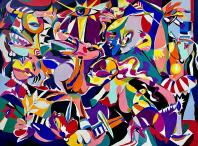 Kel Smith
Kel Smith
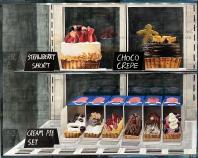
“We’re Drowning In Information” (2021)
The intention here is to explore ‘simulacra as form’ via image and sound refactoring. The work involves three components: mythology of the sky, anthropogenic semiotics, and acousmatic listening. In its simplest form, a myth is a story about gods—a personification of the natural unknown. In ancient times, the sky was considered to be an indicator of Nature’s temperament expressed through light and moisture. Western Christian cultures consider Heaven to be a place “up above,” and many native North American tribes worship by looking at the sky
Anthropogenic semiotics is the study of natural bodies as “surfaces,” upon which humans “write” a narrative in order to ascribe its significance. The sky played a large part in the 1839 introduction of the daguerreotype, for example, as everyone with a camera took a picture of the sky from their rooftop—the only way to capture enough light to make a passable image. These images represent not only technological intervention and economic influence, but also humankind’s quest to reduce everything to scale.
Acousmatic listening is the practice of capturing the quality of a sound without relying on data that is either causal (“what’s that noise?”) or semantic (“what is she saying?”). Conscious attention to acousmatic listening allows us to appreciate the anecdotal sonic qualities of acoustic instrumentation—the scrape of a violin bow, the breath of wind passing a flute—comprising formal elements commonly attributed to musique concrète.
This piece consists of sky pictures taken with a 1940s Graflex film camera, all shot between 2005 and 2020. The images were manipulated as facsimiles, replicating eight stages culled from the history of mechanical reproduction: ink-plate etching, monotype mezzotint, mercury daguerreotype, four-color halftone, black-and-white silver print, color film photography, scanned pixels, and μ-law digital glitch. The sounds were created from electronic devices built in my studio, utilizing spoken words as inputs. Text is treated as any other form, often refactored to the point of disfluency (an homage, perhaps, to the late Alvin Lucier’s I Am Sitting in a Room). The voice is Eric McLuhan (son of Marshall McLuhan) speaking about the effect of communication media on society, concerning the delta between what we believe to be true and what we accept as evidence. This work was executed in fall of 2021.
Kel Smith is a designer, artist, writer and composer of electroacoustic music recording under the moniker Suss Müsik. Employing handmade electronic instrumentation that Mr Smith designs and builds in his studio, Suss Müsik works have appeared on CHOQ Quebec radio program “La Rivière” and presented internationally, including SEAMUS and NYC Electroacoustic Music festivals. Suss Müsik recordings can be heard on Bandcamp, Spotify, and Soundcloud. Mr Smith is the author of the book Digital Outcasts: Moving Technology Forward Without Leaving People Behind (Morgan Kaufmann, 2013), as well as several papers on the topic of digital
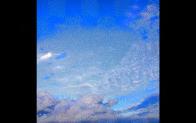
accessibility Mr Smith’s articles have appeared in SAGE World Future Review, Journal of Strategic Foresight, and International Journal of E-Politics, among others. Mr Smith is an adjunct lecturer at Rutgers University, teaching courses on digital design and social impact. Mr Smith has delivered over 100 presentations in six countries, including talks for The Center for Health Literacy and Royal National Institute of the Blind. Mr Smith’s work has been featured on CBC Radio's "The Current," National Public Radio, and BBC Ouch! Network, among others. He is currently researching material for an upcoming book on sonic art and disability aesthetics.
Tåhume“Happy to ServeYou (Hedonalgia)” (2021)
"Happy to Serve You (Hedonalgia)" is an installation that features historical symbols, advertisements, mass culture references and BDSM toys and unpacks a collection of cultural influences that relate to the struggles and plight of contemporary Greek society Spanning between hedone (pleasure) and algos (pain), this piece examines both the humorous and tragic side of the "Greekness hell loop: "the monetisation of a culture that is deeply reliant on its unique values, strong character and its rich mythological and historical past and at the same time depends on tourism and foreign investment in order to function.
Artists Tanja Kapoglou and Vangelis Tzolakis began creating art together as the Tåhume duo in 2017. Originally fromAthens, Greece,Tåhume are now based betweenAthens, Greece and London, UK. As Tåhume (a Greek slang expression for “we are a couple”), we make videos, music, installations and performances that investigate displacement, social adaptation and identity politics. Our musical counterpart, Former Athenian Teens, also attests to our interest in unpacking, examining and often offending the absurd elements of our identity We create time capsules of the present through the performative meme-ification and ritualisation of everyday experiences. By borrowing imagery from contemporary politics and advertisements, we repurpose our common visual language, expose our collective memory, and identify future trends in our shared unconscious. Working with modern and contemporary Greek imagery, symbols, and mass culture references, our works roam through a network of hyperlocal cultural influences that relate to the struggles and plight of contemporary Greek society Our working process begins with video which we accompany by musical, performative or installation elements. We set-up our videos as the focal point and create immersive environments using found objects that embrace the viewer in an audiovisual experience that transports them to a contemporary Greek landscape.
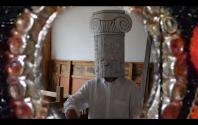
This video installation is about a stack of self-conscious bananas laying on the ground.
Zhiqian Wang (b. 1999) is a conceptual artist. Her current practice is to expand our conception of material reality by investigating topics such as randomness, causality, rationality, game, and knowledge. Through her interests in science and philosophy, she investigates ordinary language's boundaries, structures, and potential.
 Zhiqian Wang
Zhiqian Wang
“Yellow” (2019)
